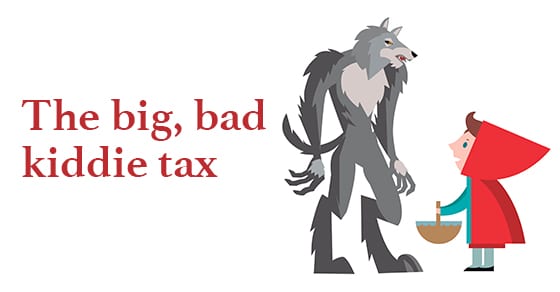 The “kiddie tax” name sounds cute, but it is not what it may seem. Changes made by the Tax Cuts and Jobs Act (TCJA) makes the tax more serious and now, children with unearned income could wind up in a tax bracket higher than that of their parents. However, the TCJA also created new opportunities for families to shift income without triggering kiddie taxes.
The “kiddie tax” name sounds cute, but it is not what it may seem. Changes made by the Tax Cuts and Jobs Act (TCJA) makes the tax more serious and now, children with unearned income could wind up in a tax bracket higher than that of their parents. However, the TCJA also created new opportunities for families to shift income without triggering kiddie taxes.
Discouraging Income Shifting
Previously, parents could substantially reduce their families’ tax bills by transferring investments or other income-producing assets to their children in lower tax brackets. Congress discouraged this practice by establishing the kiddie tax in 1986. Essentially the tax eliminated the advantages of income shifting by taxing all but a small portion of a child’s unearned income at his or her parents’ marginal rate.
Originally, the kiddie tax only applied to children under 14, but in 2007, Congress raised the age threshold to 19 (or age 24 for full-time students). Note: the kiddie tax doesn’t apply to children who reach 19 (or 24, if applicable) by the last day of the tax year. In addition, the tax doesn’t apply to children who are either 1) married and file joint returns, or 2) are 18 or older and have earned income that exceeds half of their living expenses.
More in Taxes Now
Today, the kiddie tax applies according to the tax brackets for trusts and estates, rather than at the parents’ marginal rate. In previous years, the kiddie tax essentially undid the benefits of shifting investment income to one’s children. By applying the parents’ marginal rate to that income, the tax result was about the same as if the parents had retained ownership of the assets.
The issue now is that the TCJA’s approach can oftentimes push children into a tax bracket higher than that of their parents. That’s because the highest marginal tax rate for trusts and estates (for 2019) — currently, 37% — kicks in when taxable income exceeds $12,750. For individuals, that rate doesn’t apply until taxable income reaches $510,300 ($612,350 for joint filers).
Opportunities for Planning
Even though the new kiddie tax rules can lead to severe consequences for many families, higher-income taxpayers may find tax-saving opportunities. Since the tax is now applied using the progressive rate structure for trusts and estates, rather than the parents’ marginal rate, parents can shift a limited amount of investment income to their children at lower tax rates. For example, parents in the 37% tax bracket can shift income up to $14,950 (the $2,200 unearned income threshold plus $12,750) before the 37% rate applies.
There are also several other ways to shift income to your kids without triggering kiddie tax issues. For example, you can:
- Transfer investments that emphasize capital appreciation over current income, allowing the child to defer income until the kiddie tax no longer applies,
- Transfer tax-deferred savings bonds,
- Transfer tax-exempt municipal bonds,
- Contribute to 529 college savings plans, and
- Hire your kids.
Employing your children can be beneficial because earned income isn’t subject to kiddie tax; plus, your business can deduct the expense.
Leap with Caution
Depending on your circumstances, shifting income to your children may reduce or increase your tax bill. But given the risk, make sure to look closely at the kiddie tax before you attempt this strategy and always consult your tax advisor for ways to minimize your tax exposure.


